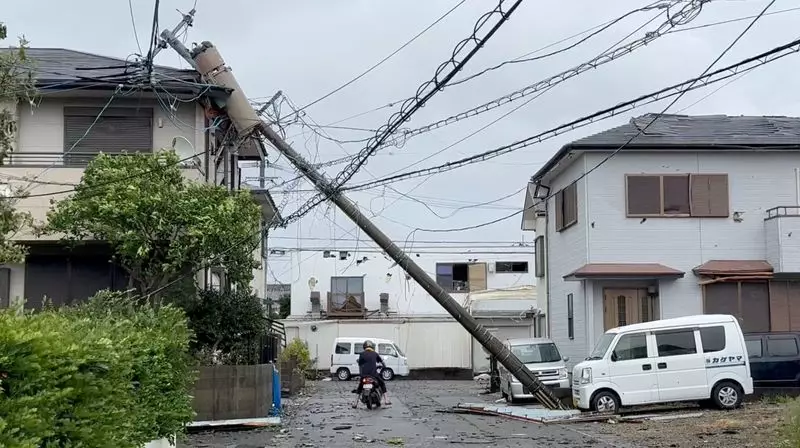Recently, Japan has been facing the wrath of Typhoon Shanshan, causing massive destruction and chaos across the country. The torrential rain and powerful winds have led to severe flooding, landslides, and the disruption of essential services. The situation is dire, with millions of people at risk and numerous fatalities already reported due to storm-related incidents.
Impact on Kyushu
In particular, the southwestern region of Kyushu has been hit hard by Typhoon Shanshan, with authorities describing it as one of the strongest storms ever to strike the area. Residents in Fukuoka city are facing the brunt of the storm, with streets deserted, shops closed, and public transportation services suspended. The situation is critical, with residents struggling to reach safety and essential supplies becoming scarce.
University student Kokoro Osoegawa, 21, shared her harrowing experience of being stranded at a rain-lashed shopping mall due to the halted train services. She expressed her disbelief at the unprecedented stoppage of all trains in the area, highlighting the extent of the disruption caused by the typhoon.
The impact of Typhoon Shanshan goes beyond the immediate physical damage caused by the storm. Major factories have been forced to shut down production, leading to economic losses and disruption of supply chains. Automakers such as Toyota, Nissan, and Honda have suspended operations at their domestic plants, while semiconductor firms and electronics giants have also been affected.
Furthermore, airlines and transportation services have been severely disrupted, with cancellations of hundreds of flights and suspension of ferry and rail services. The chaos and uncertainty have left many travelers stranded, unsure of when they will be able to return home. The situation is dire, with no immediate solutions in sight.
Authorities in Japan have issued evacuation advisories to more than 4 million people across the country, warning them to be prepared for potential disaster. The slow movement of the typhoon has raised concerns about the prolonged impact of the heavy rains and strong winds on vulnerable regions. Despite efforts to evacuate residents, only a fraction of the affected population has been moved to safety.
The disaster management agency has reported three fatalities and 78 injuries related to the storm, underscoring the urgent need for swift action to mitigate the crisis. With the storm expected to approach central and eastern regions, including Tokyo, in the coming days, the government is on high alert and working to ensure the safety of all citizens.
Typhoon Shanshan has unleashed chaos and devastation in Japan, leaving a trail of destruction in its wake. The full extent of the damage is yet to be determined, but the immediate priority is to ensure the safety and well-being of all those affected by the storm. The resilience of the Japanese people will be tested in the days to come as they work to rebuild and recover from this natural disaster.

